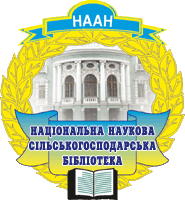 |
Electronic scientific professional edition |
| All numbers / 2018 No.2 / Article No.10 | ||||||
| 10 | The history of the origin and formation of embryology (IV century BC – end of the ХХ century) | full article | ||||
|
https://doi.org/
|
Pages: | 168-179 |  |
 |
||
| Summary | ||||||
|
The article reveals the most important stages in the formation of embryology as a science, which were laid by other scholars of ancient Greece, Hippocrates and Aristotle. The purpose of the article is to highlight the contribution of prominent scientists to the development of embryology during the fourth century IV century B.C. – the end of the ХХ century. It has been established that a significant contribution to the development of embryology was made by the Russian scientist K.F Wolf (1733–1794), who is responsible for the discovery of embryonic leaves and primary organs. The founder of modern embryology was recognized by the Russian scientist-naturalist, K.M. Ber (1792–1876), who established the basic laws of the historical development of organisms. K. Ber’s research findings are recognized as the foundation of modern embryology. The creation of evolutionary embryology, which is based on the principles of the theory of the cellular structure of organisms, belongs to А.А. Kovalevsky (1840–1901) and I.I. Mechnikov (1845–1916). According to the theory of Kovalevsky (the theory of embryonic leaves), the embryonic leaves (ecto, ento- and mesoderm) are primitive organs repeating the phylogenetic stage common to all multicellular animals. The theory of germplasm has the value of the basic law, which is the basis of comparative embryology at the level of the biogenetic law. І.І. Mechnikov found that the embryonic layers are in many species of invertebrates and prove the unity of the origin of vertebrate and invertebrate animals. Many of their works without significant amendments are used by modern embryology. In the twentieth century embryology was enriched with fundamental research by O. Severtsov, I.I. Shmalgauzen, P.P. Ivanov, P.R. Svetlov, A. Zakhvatkin, R.A. Schmidt. O.G. Knorre belongs to a series of works devoted to the theory of embryonic leaves, the evolution of processes of gastrulation and metorisis, the early stages of human embryonic development. As a result of the research of prominent embryologists of the twentieth century H.A. Schmidt, S.G. Kryzhanovsky, B.S. Matveyeva, O.M. Trifonova developed the principles of periodization of individual development and formulated their morphophysiological characteristics. Researches P.K. Anokhin and I.A. Arshavsky enriched the science of individual development of the facts about the formation of functions that provide in aggregate the integrative and adaptive quality of the organism. |
||||||
| Keywords | ||||||
| embryology, individual development, natural scientists, personalities, germ, ontogenesis, phylogeny | ||||||
| References | ||||||
|
||||||
Title page of Edition
© National Scientific Agricultural Library NAAS, 2018